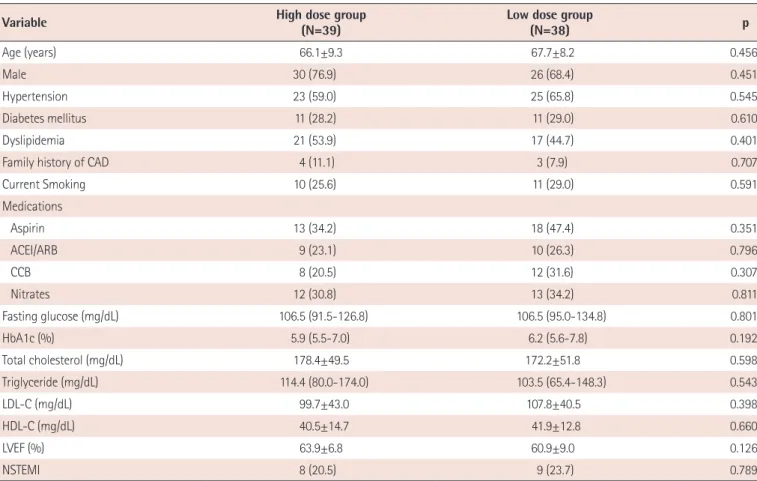Korean Circulation Journal
Introduction
Percutaneous coronary intervention (PCI) with drug-eluting
stents and pharmacological management such as antiplatelet agents and statins constitutes the therapeutic mainstay for patients with acute coronary syndrome.
1)However, PCI may cause peri-procedural myocardial injury which is associated with adverse in-hospital outcomes and a worse overall prognosis.
2)3)Previous studies suggest that even short-term administration of statins before PCI may provide clinical benefit and reduce the incidence of peri-procedural myocardial infarction (MI).
4-6)However, its mechanism has not been clearly defined. Furthermore, recent studies have raised controversy over the effects of high dose statins in the prevention of peri-procedural myocardial injury and the improvement of clinical outcome.
7)8)The Index of microcirculatory resistance (IMR) is an invasive physiologic index which interrogates the status of coronary microvasculture.
9)IMR can be reliably measured in a cardiac
Print ISSN 1738-5520 • On-line ISSN 1738-5555
Does Pre-Treatment with High Dose Atorvastatin Prevent Microvascular Dysfunction after Percutaneous Coronary Intervention in Patients with Acute Coronary Syndrome?
Bong-Ki Lee, MD 1 , Bon-Kwon Koo, MD 2 , Chang-Wook Nam, MD 3 , Joon-Hyung Doh, MD 4 , Woo-Young Chung, MD 5 , Byung-Ryul Cho, MD 1 , and William F. Fearon, MD 6
1



